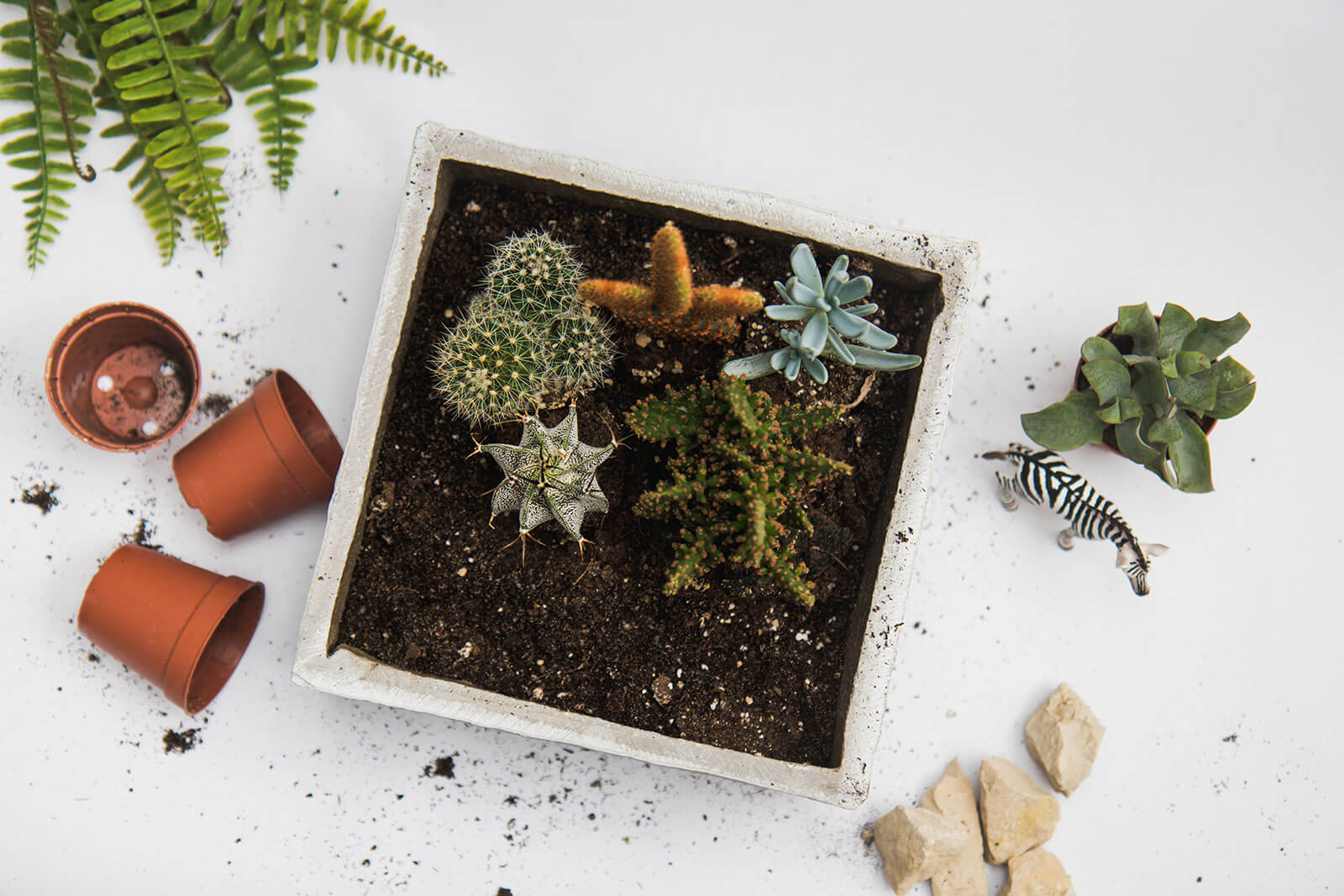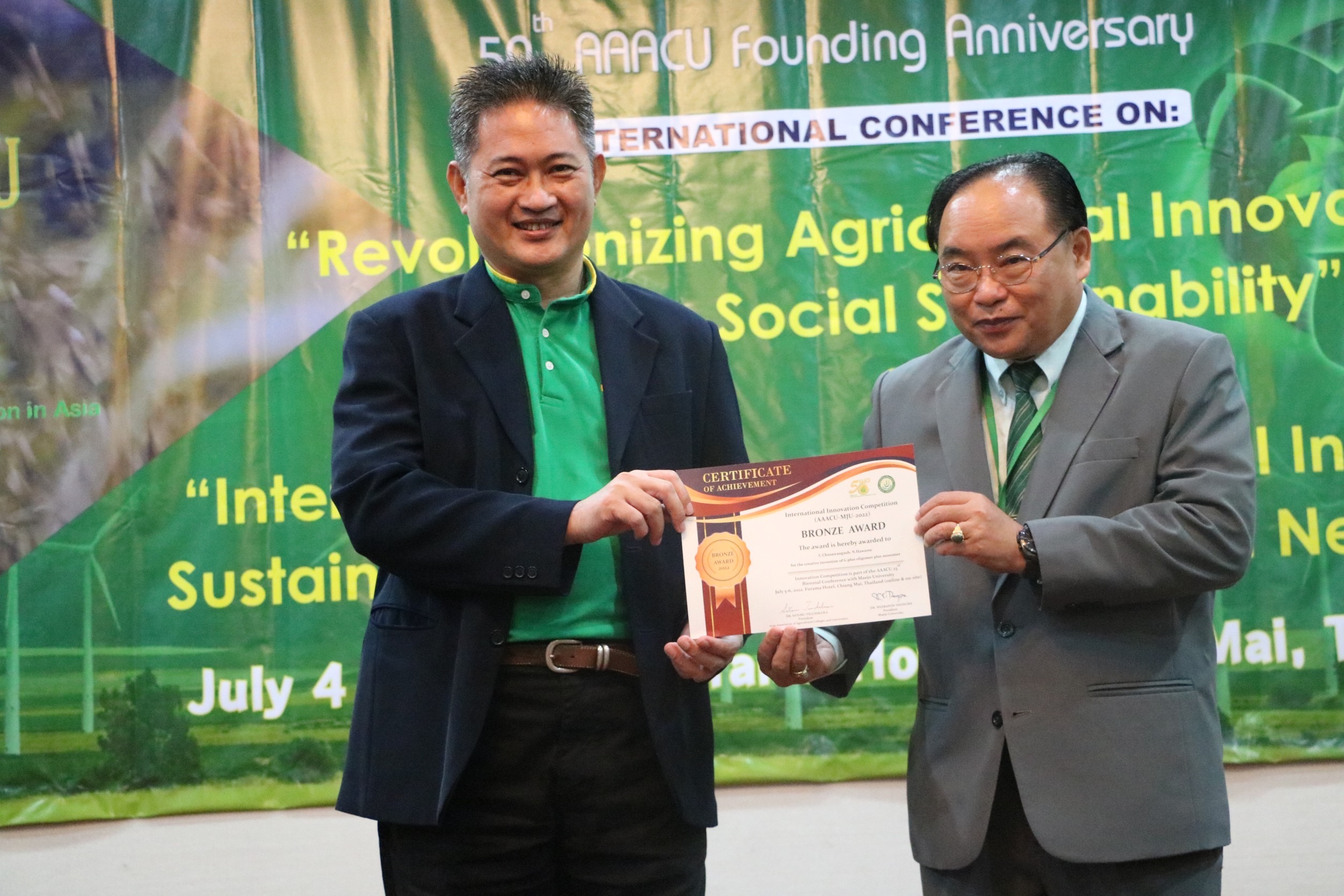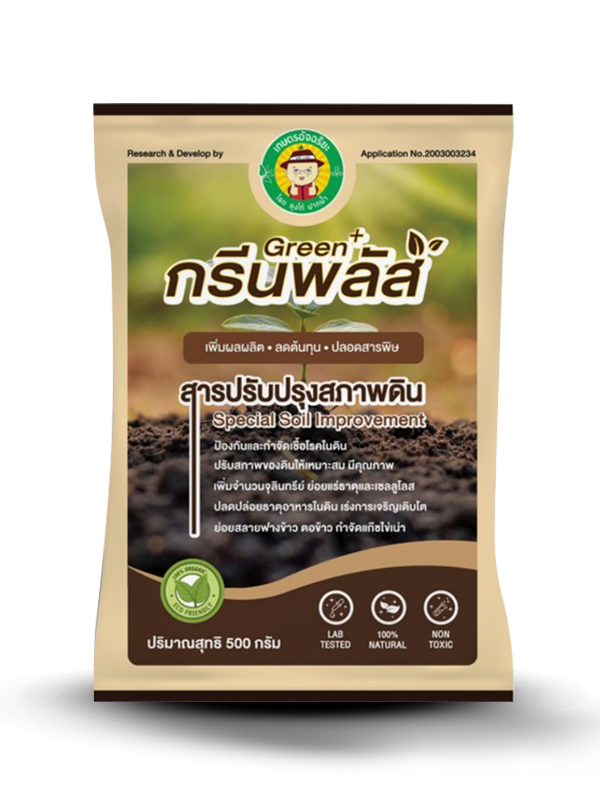
Green Plus
Petty Patent Application Number 2003003234
Innovative Soil Amendment (ISA) contains a variety of amino acids and special nutritional supplements. It can enhance soil conditions regulate pH and add up to 5 microbe species including Trichoderma harzianum, Bacillus subtilis, Lactobacillus, Saccharomyces, and Mycorrhiza to the soil. Green Plus is beneficial in preventing and eradicating soil pathogens, improving soil quality, releasing nutrients in the soil, stimulating plant growth, digesting minerals and cellulose, decomposing rice straw and rice stubble, and eliminating hydrogen sulfide.
Dr. Pakpoom Vatcharakajon was the first to develop a technique that integrated several different strains of beneficial microbes by forming each type of microbe into spores, coating those spores, and allowing the microorganisms to stay alive in their feeding medium. When it is utilized, it must be made for all five strains of microbes to emerge from spores, and swiftly grow. Invention, research, and development of Green Plus as shown in Figure 1.
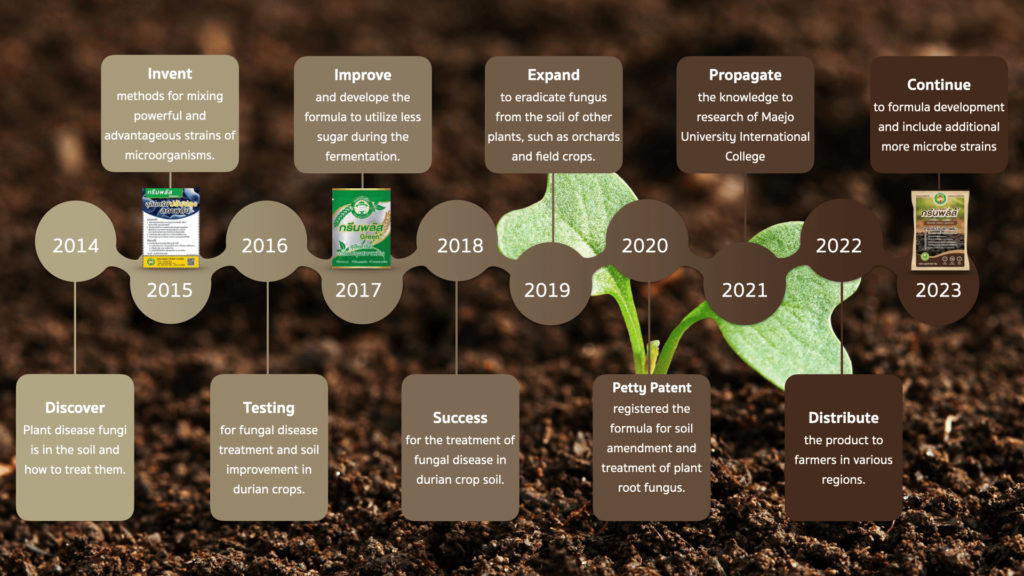
How to use Green Plus
- Put Green Plus 1 bag (500 grams) into 500 liters of clean water then mix thoroughly.
- Close the cover and set it aside in a dim place for 2 hours.
- Stir well before use.
- Water the area under the tree to keep it moist before applying Green Plus.
- Can be dispersed using the current water system or a sprayer. Spray until the soil under the canopy is soaked.
- It should be used every 3 months.
Research and testing of Green Plus
Dr. Pakpoom Vatcharakajon, Management of Organic Agriculture, and his research team conducted study and testing on significant Thai economic crops including rice and durian crops. The test results are as follows.
Results of Green Plus application
- Application in rice crops
- The treatment of durians root rot diseases View Detail
- The treatment of Citrus Greening Diseases-CGD (Huanglongbing-HLB)
- The treatment of fungal disease in pomelo crops.
- Other plant diseases treatment
References
- M. Sood et al. Trichoderma: The “Secrets” of a Multitalented Biocontrol Agent. Plants 2020, 9, 762, 1-25.
- M. Mukherjee et al. Trichoderma–Plant–Pathogen Interactions: Advances in Genetics of Biological Control. Indian J Microbiol (Oct–Dec 2012) 52(4):522–529.
- A. Schuster et al. Biology and biotechnology of Trichoderma. Appl Microbiol Biotechnol (2010) 87:787–799.
- S. Zhang et al. Application of Plant-Growth- Promoting Fungi Trichoderma longibrachiatum T6 Enhances Tolerance of Wheat to Salt Stress through Improvement of Antioxidative Defense System and Gene Expression. Frontiers in Plant Science, September 2016, Volume 7, Article 1405, 1-11.
- G. Banerjee et al. Beneficial effects of bio-controlling agent Bacillus cereus IB311 on the agricultural crop production and its biomass optimization through response surface methodology. Biological Sciences, An Acad Bras Cienc (2018), 90 (2 Suppl. 1), 2149-2159.
- R. Radhakrishnan et al. Bacillus: A Biological Tool for Crop Improvement through Bio-Molecular Changes in Adverse Environments. Frontiers in Physiology, September 2017 , Volume 8, Article 667, 1-14.
- R.L. Peterson et al. Mycorrhizae and their potential use in the agricultural and forestry industries. Biotechnology Advances, Vol. 2, Issues 1, 1984, 101-120.
- นลินี ศิวากรณ์ พจนา ตระกูลสุขรัตน์ เพลินพิศ สงสังข์ และ ศิริพร วรกุลดํารงชัย การควบคุมโรครากเน่าโคนเน่าของทุเรียนโดยใช้เชื้อจุลินทรีย์ปฏิปักษ์ กลุ่มวิจัยโรคพืช สำนักวิจัยพัฒนาการอารักขาพืช
- ภาคภูมิ วัชรขจร การปลูกข้าวด้วยการใช้ชีวภัณฑ์เพื่อทำเกษตรอินทรีย์ เพิ่มผลผลิต และลดต้นทุน การบริหารจัดการเกษตรอินทรีย์ วิทยาลัยนานาชาติ มหาวิทยาลัยแม่โจ้ เชียงใหม่
- มัลลิกา จินดาซิงห์ การใช้จุลินทรีย์ในการป้องกันและกำจัดศัตรูพืช มหาวิทยาลัยแม่โจ้ ชุมพร
